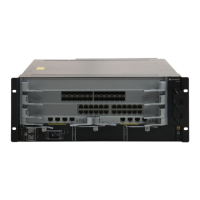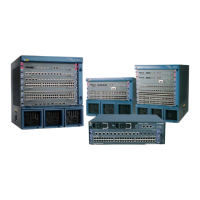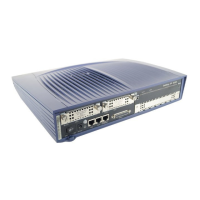Configuration Roadmap
Set up an MSDP peer on the RP in each PIM-SM domain. Establish the static RPF peer
relationship between MSDP peers. In this way, the source information can be transmitted across
domains without changing unicast topology.
1. Configure IP addresses for the interfaces on each Switch, configure OSPF in the AS,
configure EBGP between ASs, and import BGP and OSPF routes into each other's routing
table.
2. Enable multicast on all Switches and PIM-SM on all interfaces and enable IGMP on the
interfaces at the user side. Configure Loopback0, C-BSR, and C-RP. The Loopback 0
interfaces on SwitchC, SwitchD, and SwitchF function as the C-BSR and the C-RP of each
PIM-SM domain.
3. Establish MSDP peer relationship between RPs of each domain. Establish the MSDP peer
relationship between SwitchC and SwitchD and establish the MSDP peer relationship
between SwitchC and SwitchF.
4. Specify a static RPF peer for the MSDP peer. The static RPF peers of SwitchC are
SwitchD and SwitchF. SwitchD and SwitchF have only one static RPF peer, namely,
SwitchC. According to RPF rules, Switches receive SA messages from static RPF peers.
Data Preparation
To complete the configuration, you need the following data:
l Number of the AS that SwitchA, SwitchB, and SwitchC belong to: 100
l Router IDs of SwitchA, SwitchB, and SwitchC: 1.1.1.3, 1.1.1.2 and 1.1.1.1
l Number of the AS that SwitchD and SwitchE belong to: 200
l Router IDs of SwitchD and SwitchE: 2.2.2.2 and 2.2.2.1
l Number of the AS that SwitchF and SwitchG belong to: 200
l Router ID of SwitchF: 3.3.3.3
l SwitchC uses the list-df policy to filter the SA messages from SwitchD and SwitchF.
l SwitchD and SwitchF use the list-c policy to filter the SA messages from SwitchC.
NOTE
This configuration example describes only the commands used to configure static RPF peers.
Procedure
Step 1 Configure the IP addresses of interfaces and the unicast routing protocol
# According to Figure 7-2, configure IP addresses and masks for the interfaces of each
Switch. Configure OSPF in the AS. Configure EBGP between SwitchA and SwitchF, and
between SwitchB and SwitchE. Import BGP and OSPF routes into each other's routing table.
Ensure that the Switches can communicate with each other at the network layer. Ensure the
dynamic route update between routers through the unicast routing protocol. The configuration
procedure is not provided here.
Step 2 Enable multicast on all Switches and PIM-SM on all interfaces, and enable the IGMP function
on the interfaces connected to the hosts. In addition, configure the service boundary of BSR on
the interfaces of Switches on the AS boundary.
# Enable multicast all the Switches and enable PIM-SM on each interface. The configurations
of other Switches are similar to configuration of SwitchC, and are not provided here.
Quidway S7700 Smart Routing Switch
Configuration Guide - Multicast 7 MSDP Configuration
Issue 01 (2011-07-15) Huawei Proprietary and Confidential
Copyright © Huawei Technologies Co., Ltd.
271

